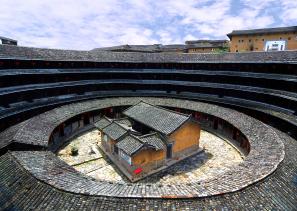
Cultural and Natural Heritages in Fujian•Longyan
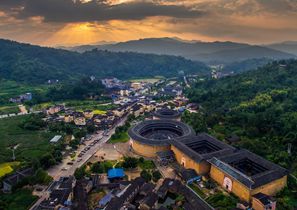
Gaobei Tulou Cluster
Gaobei Tulou Cluster is situated in Gaobei Village, Gaotou Township, Yongding District. Backing onto high mountains, a stream flows from west to east in front of it. Most villagers have the same family name – Jiang.
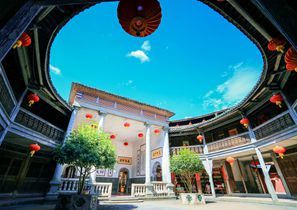
Hongkeng Tulou Cluster
Hongkeng Tulou Cluster is located in Hongkeng Village, Hukeng Town, Yongding District, Longyan City. In the 13th century (the end of the Song Dynasty and the beginning of the Yuan Dynasty), Lin’s foundation was laid in Hongkeng Village.
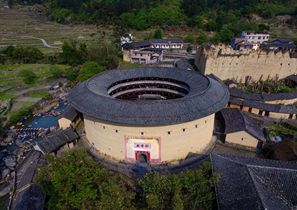
Yanxiang Lou
Located in Xinnan Village, Hukeng Town, Yongding District, Longyan City, Yanxiang Lou was founded in 1880 by Su Guchun. The main body of Yanxiang Lou is 40m in diameter, with 1.5m-thick bottom wall, 0.7m-thick top wall and 14.5m-high wall.
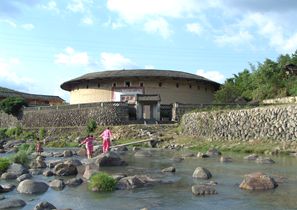
Zhenfu Lou
Lied in Xipian Village, Hukeng Town, Zhenfu Lou was built in 1913 by Mr. Su Zhentai, who became a rich man in tobacco business. Like Zhencheng Lou, it is one of the masterpieces of Hakka Tulou in the early 20th century, which combined some modern western architectural arts with classical Chinese garden arts.
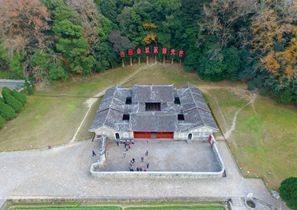
Site Group of Gutian Conference
The site group of Gutian Conference is located in Gutian Town of Shanghang County, including the site of Gutian Conference (Liao’s Ancestral Hall), site of front committee authority and political department of the Fourth Red Amy (Songyin Hall in Bajia Village), site of Command of the Fourth Red Amy (Zhongxing Hall in Bajia Village), site of Mao zedong’s writing of “A Single Spark Can Start a Prairie Fire” (Xiecheng Shop in Laifang Village), site of the First Congress of the Communist Party of China of West Fujian Province (Wenchang Pavilion in Jiaoyang Township), etc.
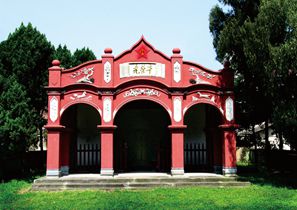
Site Group of Mao Zedong’s Survey in Caixi Township
The site group of Mao Zedong’s Survey in Caixi Township is located in Xiacai Village, Caixi Town, including the former site of Soviet in Caixi area, Glorious Pavilion, Lenin Platform, and former site of Trade Union in Caixi area (Lenin Hall).
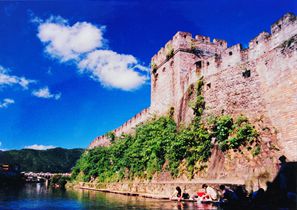
Tingzhou City Wall
The Tingzhou City Wall was built in the Dali fourth year of the Tang Dynasty. Tingzhou prefectural governor Chen Jian moved the Tingzhou Prefecture office from Dongfangkou to the site, “Building the Tucheng at the south side of Wolong Mountain”.
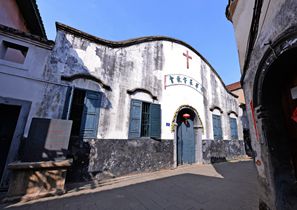
Changting Revolutionary Site
Xingeng Villa, the former site of the Command and the Political Department of the Fourth Red Army is located at No. 11 Tingjiang Lane, Tingzhou Town. It faces south and is a brick and wood structure of the palace.

Chaotianmen Tower
Chaotianmen Tower is located on the East Street of Tingzhou Town and was built in the Tang Dynasty. The first section of the city gate is a second entrance building, which is 5.9 meters deep, 4.48 meters wide and 4.62 meters high.
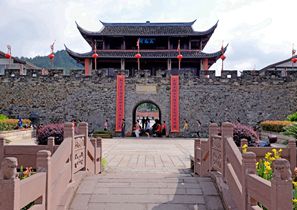
Sanyuan Pavilion Tower
The Sanyuan Pavilion Tower is located on the Guangchu Gate of the central axis of Tingzhou City. Guangchu Gate was built in the Tang Dynasty, called Yinjiang Gate in the Song Dynasty and changed back to Guangchu Gate in the fourth year of Emperor Hongwu in the Ming Dynasty.
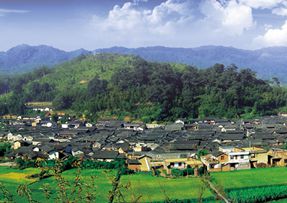
Peitian Ancient Village
Peitian Ancient village was built in the Southern Song Dynasty with a history about 800 years. Its total area is 13.4 square kilometers, with a population of 1,489 distributing in 14 villager groups and 389 households.
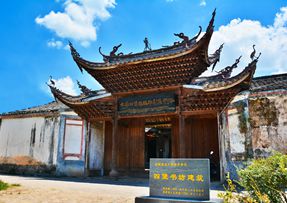
Sibao Ancient Bookstore Buildings
During the Ming and Qing Dynasties, Sibao, together with Beijing, Hankou and Huwan in Jiangxi, was called the four major woodblock printing bases in China.
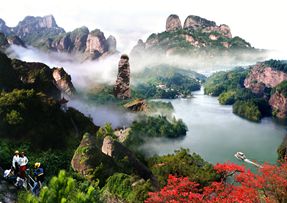
Guanzhaishan Mountain
Guanzhaishan has great scientific research value and aesthetic value. Guanzhaishan Mountain is named after its main peak, which resembles the cap worn by the ancient imperial censor and conveys the idea of integrity and uprightness.
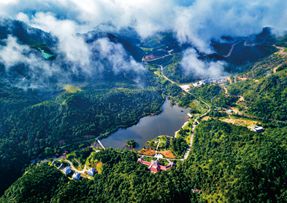
Meihuashan Mountain
Located in Buyun Township, Shanghang County, the South China Tiger Park Ecological Tourism Zone of Meihua Mountain has an average altitude of 1,250 meters.
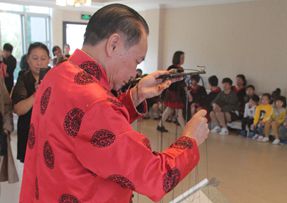
Liancheng Puppet Calligraphy
Liancheng string puppet show, with a long history, is the fifth batch of national intangible cultural heritage protection projects.
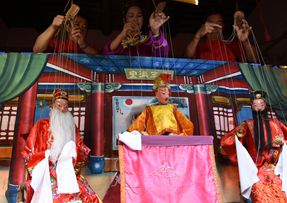
Marionette in Yongding Tulou
Marionette is a kind of ancient traditional puppet show. It is also one of the art forms first created by Chinese.
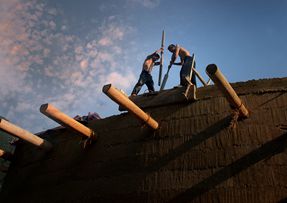
Architectural Craftsmanship of Yongding Hakka Tulou
Yongding Hakka earth buildings are immature-soil buildings and spread all over the district, which are inscribed as exceptional examples of a building tradition by its profound humanities connotation and unique modeling function.
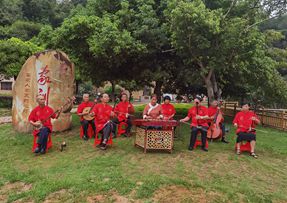
Hakka-style Performance(Shifan Hakka Music)
Shifan Hakka music, also known as “Shiban” and “Wudui”, was named after playing ten musical instruments made of silk, bamboo, leather, wood and gold, etc.
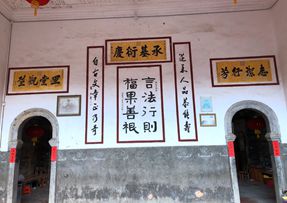
Chinese Couplets in Yongding Hakka Tulou
The Chinese couplet refers to two complementary poetic lines adhering to certain rules, often written on red paper or carved on wooden uprights for appreciation.
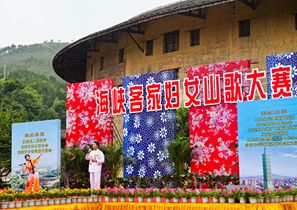
Hakka Folk Songs in Yongding
With a long history, the Hakka Folk Songs in Yongding, formed a system of itself, which can be divided into five categories: love songs, labor songs, political songs, life songs and children’s songs.
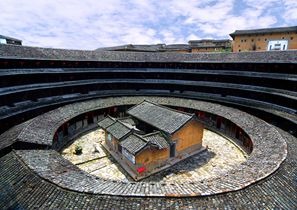
Chuxi Tulou Cluster
Set amongst the deep mountains of Chuxi Village in Xiayang Town, Yongding District, Chuxi Tulou Cluster, whose villagers are all surnamed Xu, was completed from the Ming Dynasty to modern times after hundreds of years.